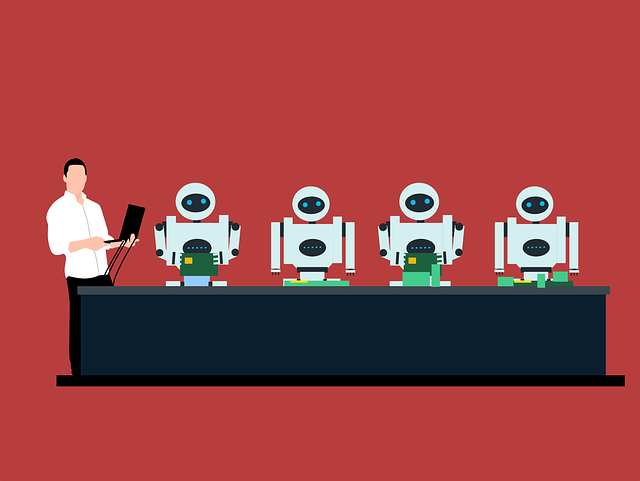Testing is a important phase in software development, ensuring that applications function as expected before release. It involves identifying bugs and errors to provide users with a seamless experience. There are two main types of testing: automated and manual. Automated testing uses tools to run tests quickly and efficiently, saving time and reducing errors. Manual testing, on the other hand, relies on human testers to evaluate the software’s functionality and user experience. Each method has its strengths and limitations, with automated testing offering speed and scalability, while manual testing excels in adaptability and handling complex scenarios. Often, a hybrid approach is used to combine the benefits of both methods.
Table of Contents

What is Automated testing?
Automated Testing is defined as a testing method which uses special tools and software to perform tests on software applications automatically. It is basically a fast and an effective way of checking whether the software is functioning correctly by timely identifying the issues and the bugs. This ends up in saving a lot of time with a reduction in errors that occur because of the repetitive tasks and also enhances the overall productivity along with getting faster feedback about the use of the software application.
● Improved Efficiency & Speed :
Automation in the testing process leads to an improvement in the overall speed and much improved efficiency as compared to manual testing because it perform more tests and identify bugs and errors in a shorter interval of time because tests are scheduled in such a way that it runs automatically so, manual errors are avoided.
● Continuous Testing :
The main advantage of automated testing is Continuous testing which helps in speeding up the process of checking bugs throughout the software development process instead of waiting till the end to go through the software again and identify the errors. It helps in improving the overall efficiency of the software with a reduced risk of errors and defects in the long run.
● More Cost Required :
Setting up of automated testing systems require a lot of initial investments in terms of time and resources for setting up the system and further investments to help the system stay upgraded as per the latest updates and prevent it from being outdated. But in the long run, Automated testing save a lot of costs by reducing the need of manual testers.
● Scalability & Productivity :
Automated testing lead to more scalable and productive tasks as it handles large amounts of testing efficiently and adapt to the changing needs of the software development without compromising with the actual speed and accuracy. It also leads to a better allocation and better utilization of resources by automating the repetitive tasks.
● Accuracy :
Automated testing provides accurate results for the issues by reducing the overall chances of human errors. Automated testing follows some predefined testing rules and instructions which ensures that the same steps are executed every single time without the risk of manual errors.

What is Manual testing?
The process by which software is tested manually without the use of any automated tools is known as manual testing. It involves processes such as verifying the functionality of the software, UI testing, identifying bugs and errors to make sure that the application works smoothly and correctly. Testers here need to follow a specific plan and communicate clearly with the development team to make sure that the testing process is well established.
● Adaptability :
Manual testing allows the testers to quickly adjust & adapt to the changes according to the requirements through different approaches. This allows the testers to tailor and address the necessary changes in the software. Thus, the adaptability of manual testing helps in resulting in overall improved and effective outcomes.
● Solving Complex Errors :
Manual Testing helps in dealing with complex scenarios as the testers use their own critical thinking skills & their creativity to identify and solve the emerging issues. Testers find different ways and means by which a software work efficiently in all kinds of situations because there may be chances in automated testing that some issues may remain uncovered, so manual testing catches and covers all the bugs.
● Evaluating the User Experience :
Through Manual testing, testers evaluate the software from a user’s point of view by completely understanding the user perspective & user experience which provides the users with a seamless experience with that application software because by understanding the user experience, the testers manually improve the overall functionality of the application in accordance to the needs.
● Time Consuming :
Manual testing is quite time consuming when it is being compared to automated testing because here the testers have to manually execute all the results by going through each and every step which end up taking a lot of time. But this time consuming process ensures that the software is reliable and of good quality before it is being released to the users.
● Cost Effective :
Manual testing is much more cost effective as compared to that of automated testing when it comes to testing a software that has complex functionality and requires critical thinking. Though manual testing requires more resources as compared to automated testing, it does not require any sort of investments for maintenance of the automation to prevent it from being outdated.
Making a specific choice between Automated Testing and Manual Testing basically depends on the specific needs of a respective organization. Both the methods have their own advantages accompanied with some disadvantages as well. Automated testing leads to reduction in the human errors, Improves Efficiency and Speed, Enhances Productivity and many more whereas Manual Testing leads to Adaptability, Cost Effectiveness and solves complex problems which includes critical thinking. The combination of both the testing methods is termed as Hybrid Testing and is often used by the companies to provide the benefits and plus points of both the testing methods.

Automated vs Manual Testing :
Automated testing is considered better than manual testing for several reasons:
● Speed and Efficiency
Automated tests can run quickly and repeatedly, significantly reducing the time needed to execute a large suite of tests. This allows for more tests to be run in a shorter time, which is especially valuable in continuous integration and continuous delivery (CI/CD) environment.
● Consistency and Reliability
: Automated tests eliminate the risk of human error. They follow predefined steps exactly the same way each time, ensuring consistency in test execution and results. This reduces the chances of overlooking errors that might occur with manual testing.
● Cost-Effective in the Long Run
Although the initial setup of automated testing tools and scripts can be expensive and time-consuming, it becomes cost-effective over time. Once automated tests are created, they can be reused across multiple test cycles without additional costs, reducing the need for manual testers.
● Scalability
Automated testing can easily scale to accommodate large and complex applications. It can handle thousands of test cases across multiple environments and configurations, which would be impractical to do manually.
● Continuous Testing
Automated testing supports continuous testing practices, allowing tests to be run automatically at various stages of the development cycle. This provides early feedback to developers and helps catch issues sooner, improving overall software quality.
● Better Resource Allocation
Automation frees up manual testers to focus on more complex, exploratory, and creative testing tasks that require human judgment, rather than repetitive tasks that can be automated.
In conclusion, automated testing offers significant advantages over manual testing, particularly in environments requiring speed, scalability, and consistency. It reduces human error, enhances efficiency, and provides reliable results by following predefined steps. While the initial investment for automated testing can be high, it becomes more cost-effective over time due to its reusability and ability to run multiple test cycles without additional resources.
Automated testing also supports continuous testing, providing early feedback and helping to maintain high software quality. Despite these benefits, manual testing remains valuable for its adaptability and ability to address complex scenarios. A hybrid approach, combining both methods, is often the most effective way to leverage the strengths of each testing strategy.
How does Himcos help?
Himcos provides Business Software Modernization services. Our team isn’t just skilled, you get the best minds tackling your modernization project, ensuring exceptional quality and results. Our experts help improve performance, reduce costs, enhance security, and foster innovation providing our clients with scalable, secure and high performing applications.



